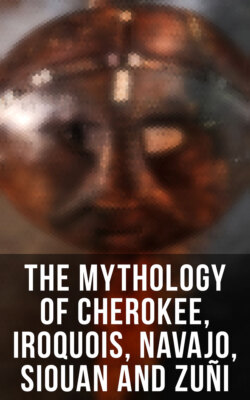Читать книгу The Mythology of Cherokee, Iroquois, Navajo, Siouan and Zuñi - James Mooney - Страница 58
На сайте Литреса книга снята с продажи.
Animism
ОглавлениеAll mythological systems spring from the same fundamental basis. The gods are the children of reverence and necessity. But their genealogy stretches still farther back. Savage man, unable to distinguish between the animate and inanimate, imagines every surrounding object to be, like himself, instinct with life. Trees, the winds, the river (which he names "the Long Person"), all possess life and consciousness in his eyes. The trees moan and rustle, therefore they speak, or are, perchance, the dwelling-place of powerful spirits. The winds are full of words, sighings, warnings, threats, the noises, without doubt, of wandering powers, friendly or unfriendly beings. The water moves, articulates, prophesies, as, for example, did the Peruvian Rimac and Ipurimac—'the Oracles,' 'the Prophesiers.' Even abstract qualities were supposed to possess the attributes of living things. Light and darkness, heat and cold, were regarded as active and alert agencies. The sky was looked upon as the All-Father from whose co-operation with the Mother Earth all living things had sprung. This condition of belief is known as 'animism.'
